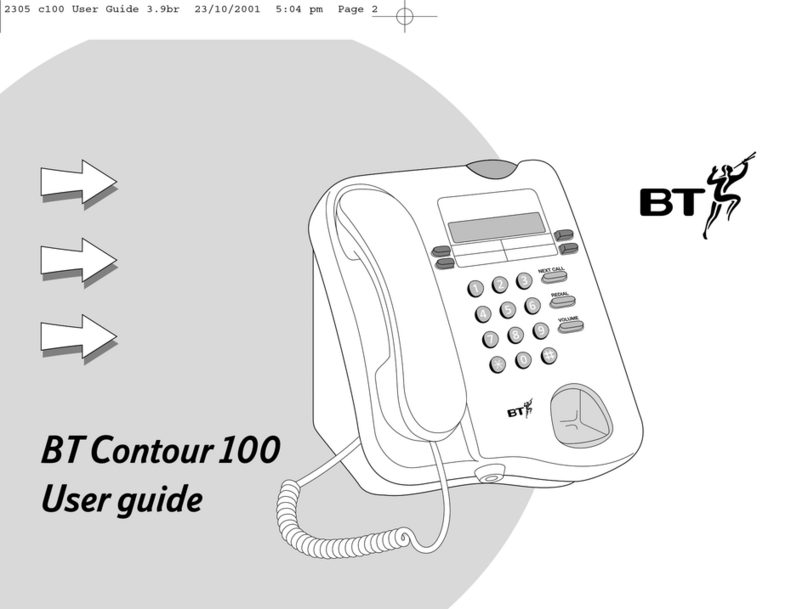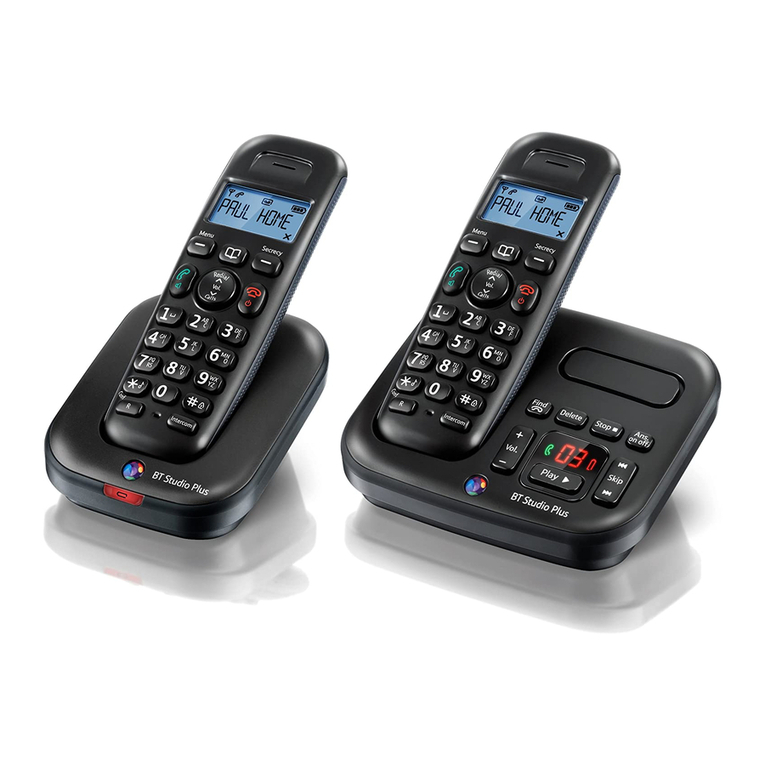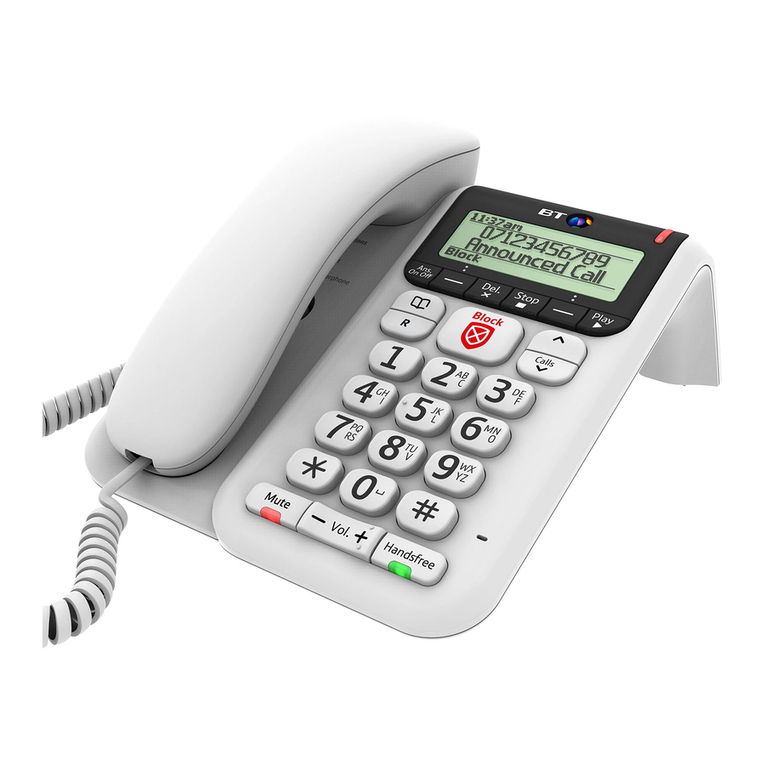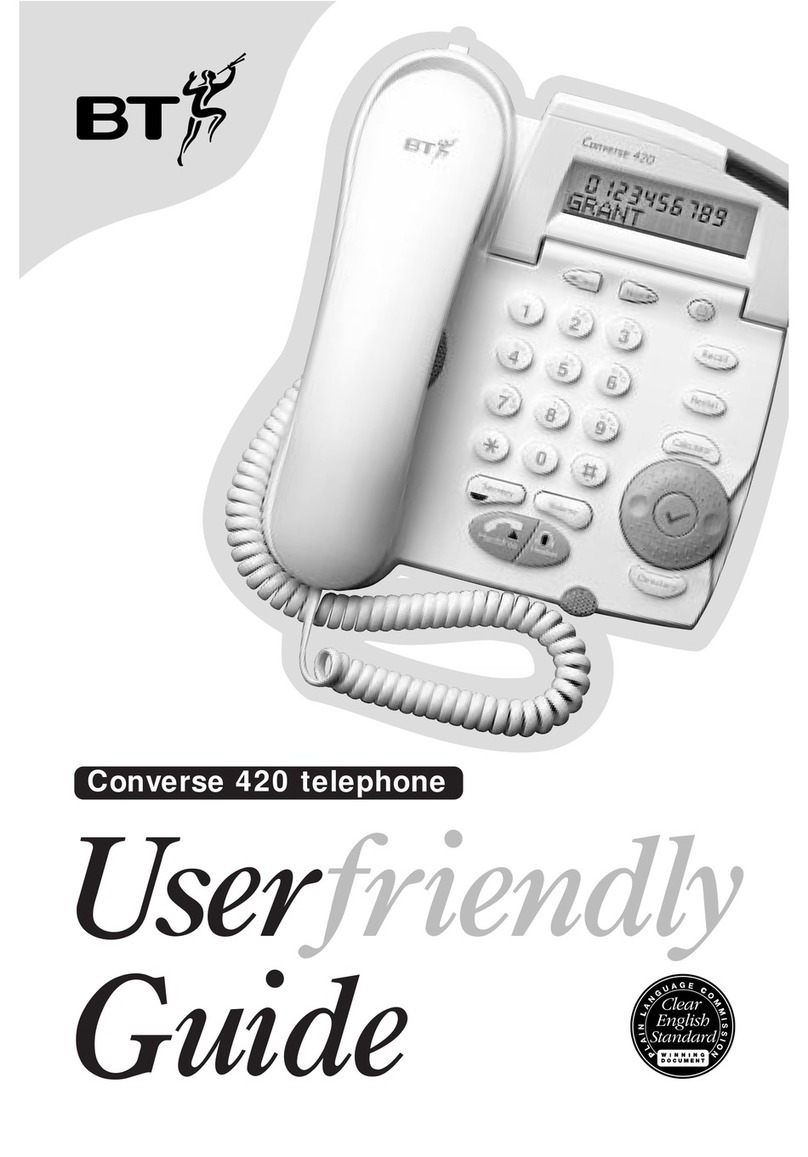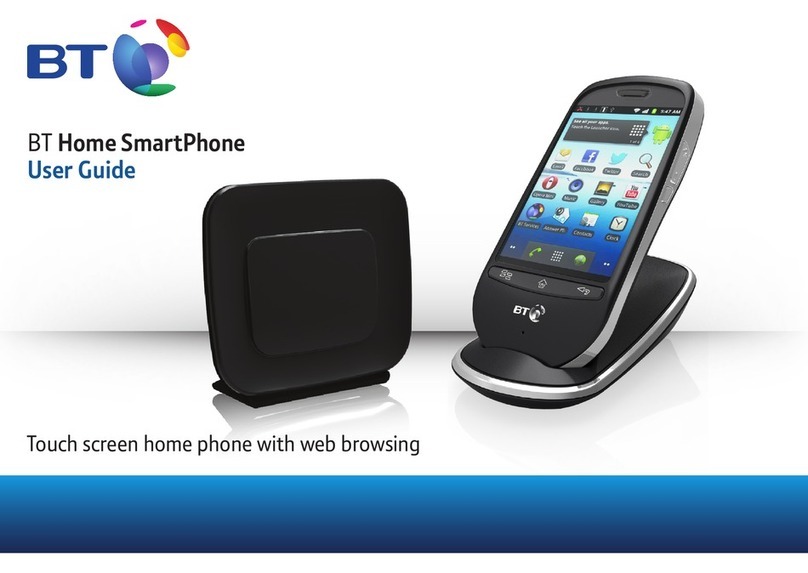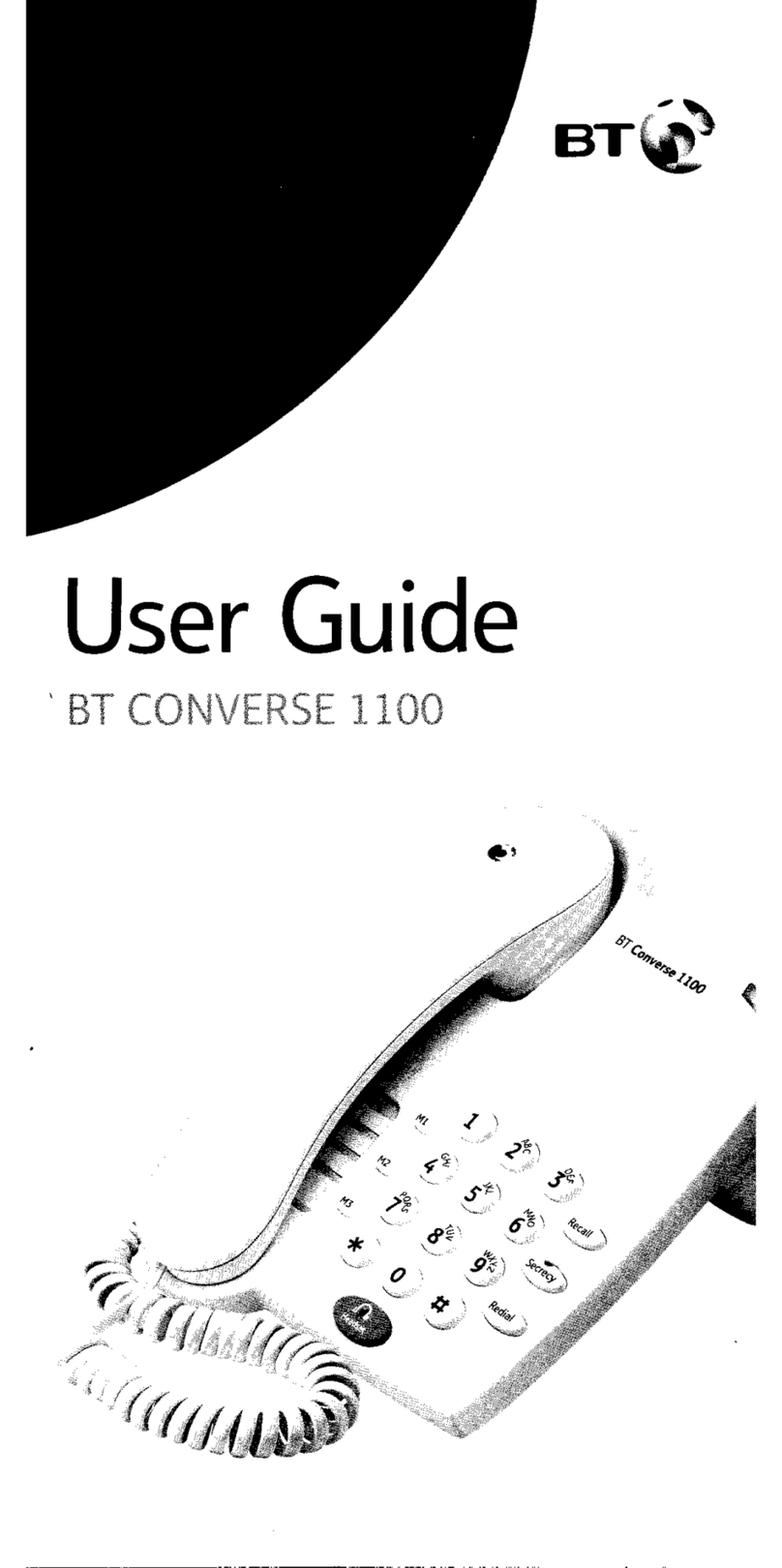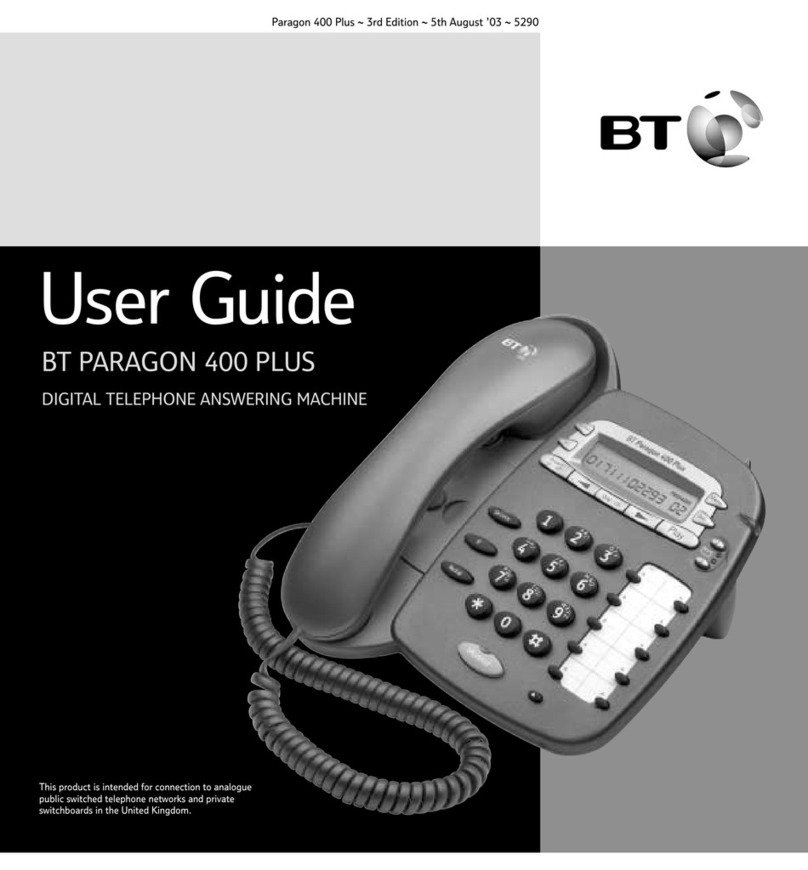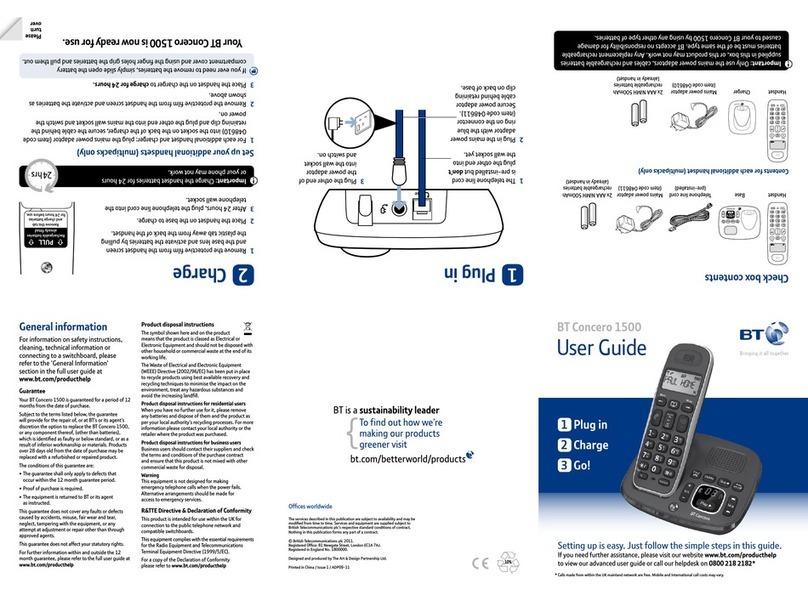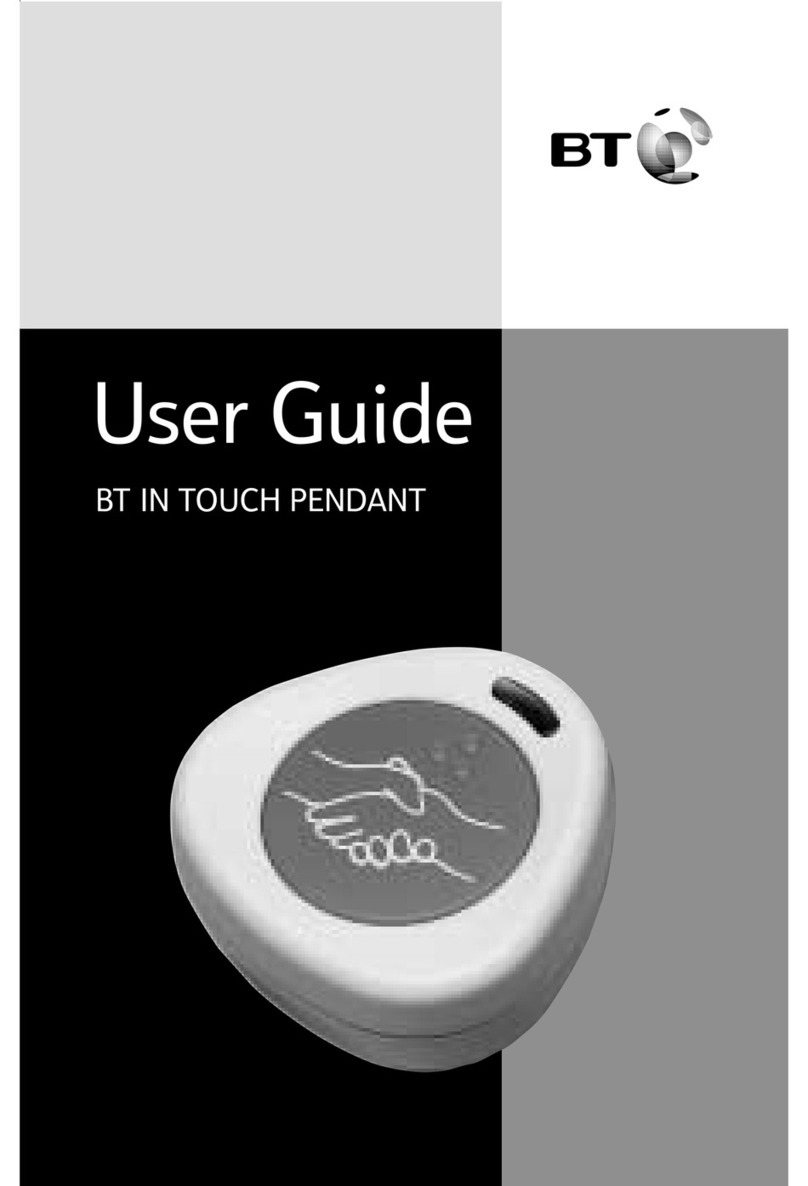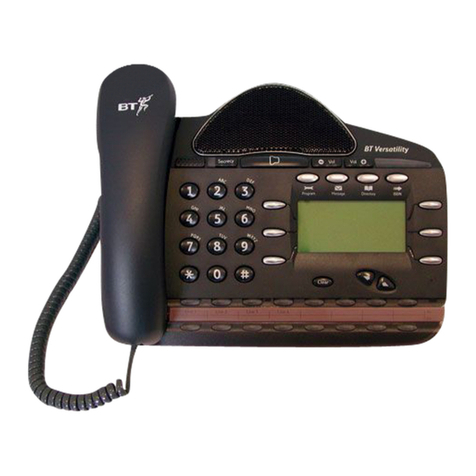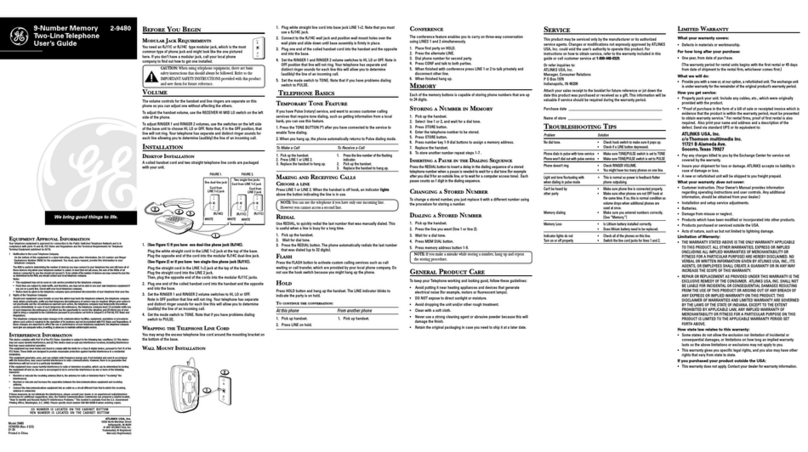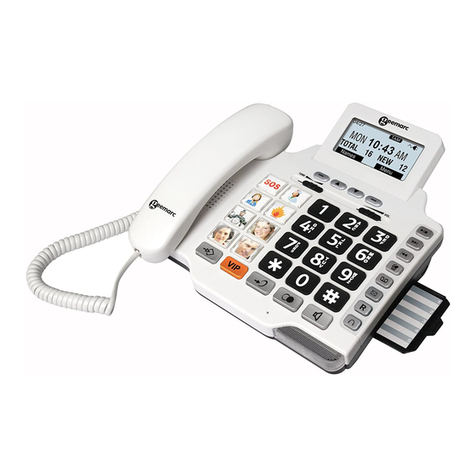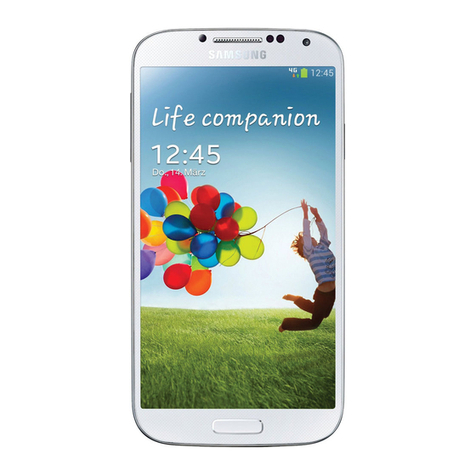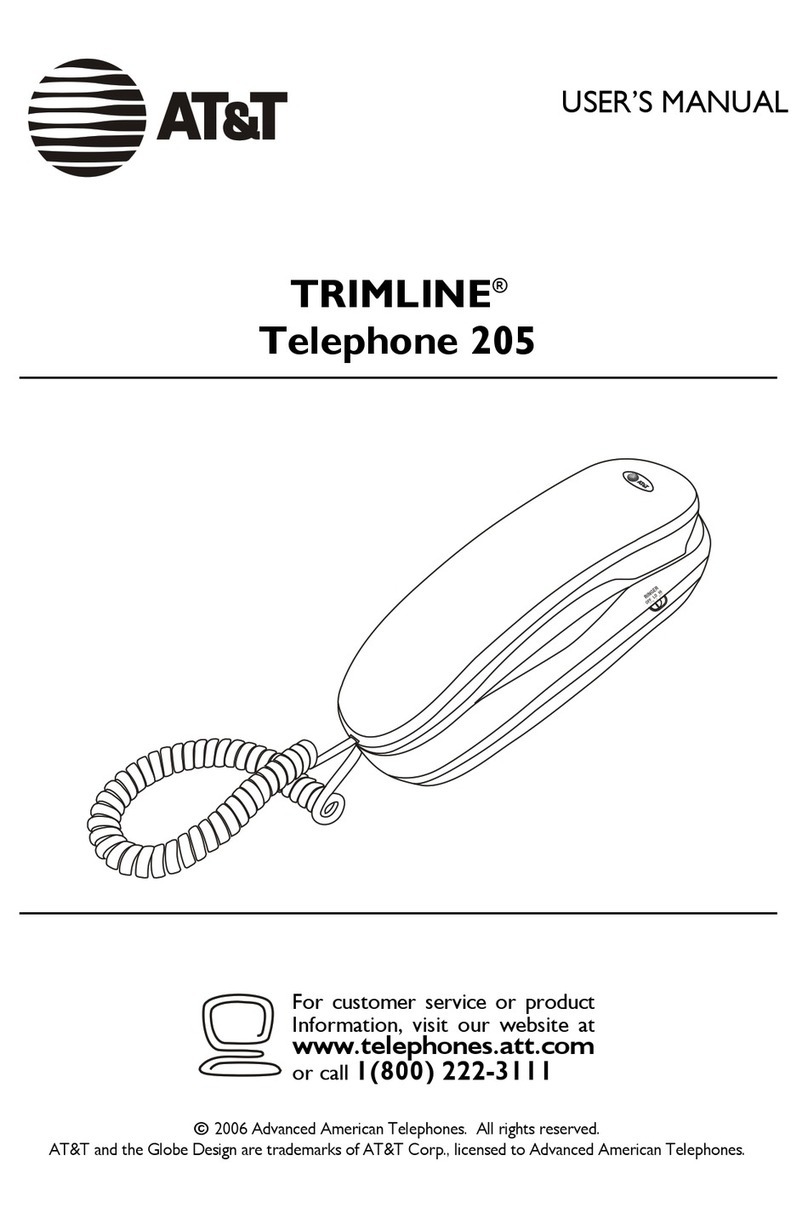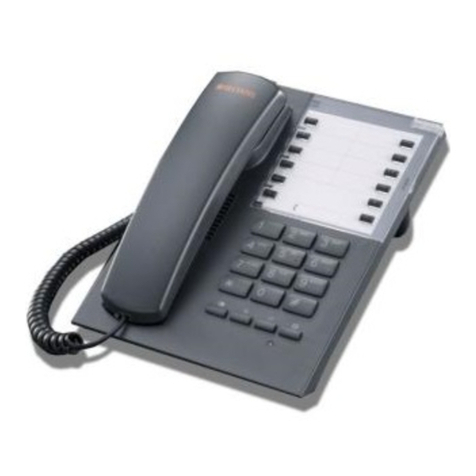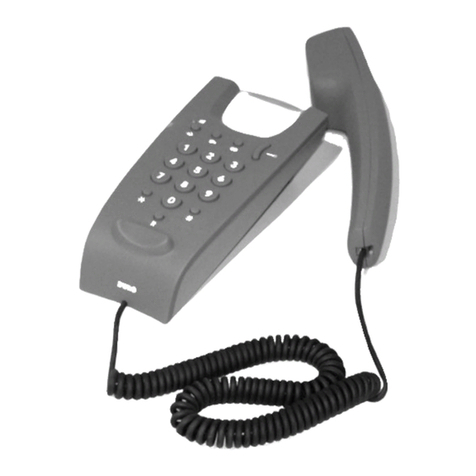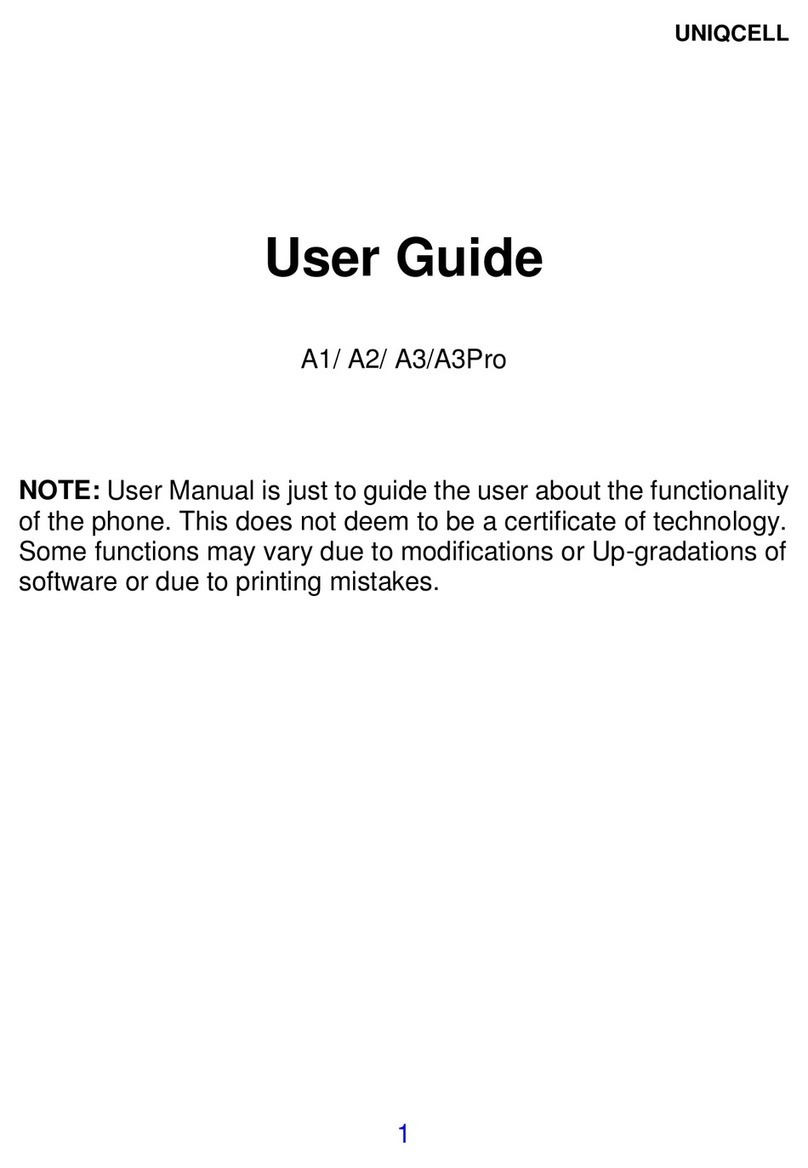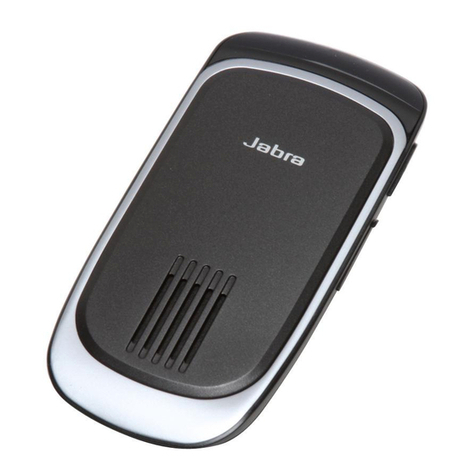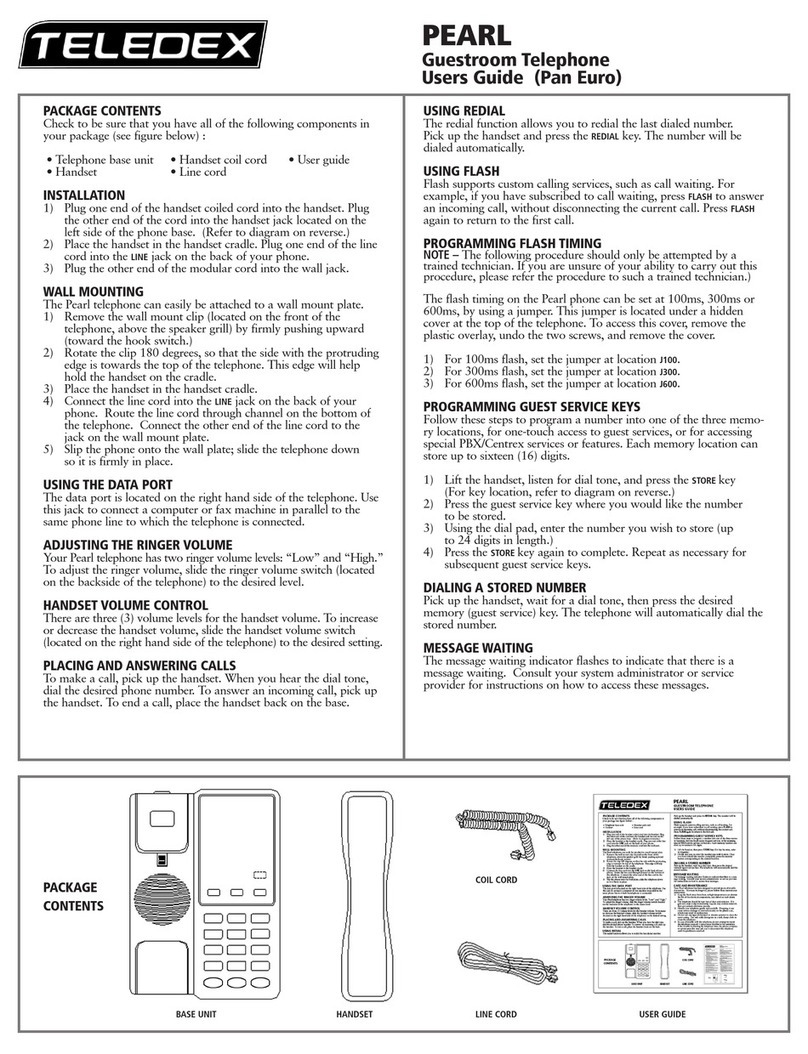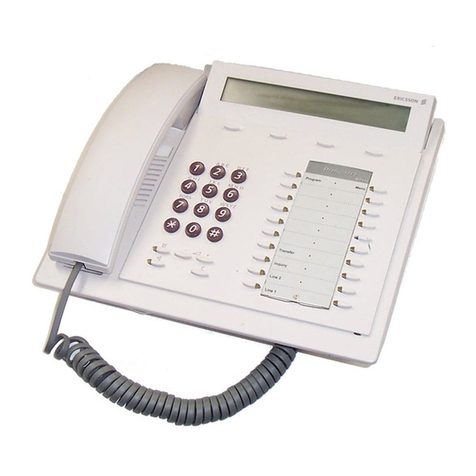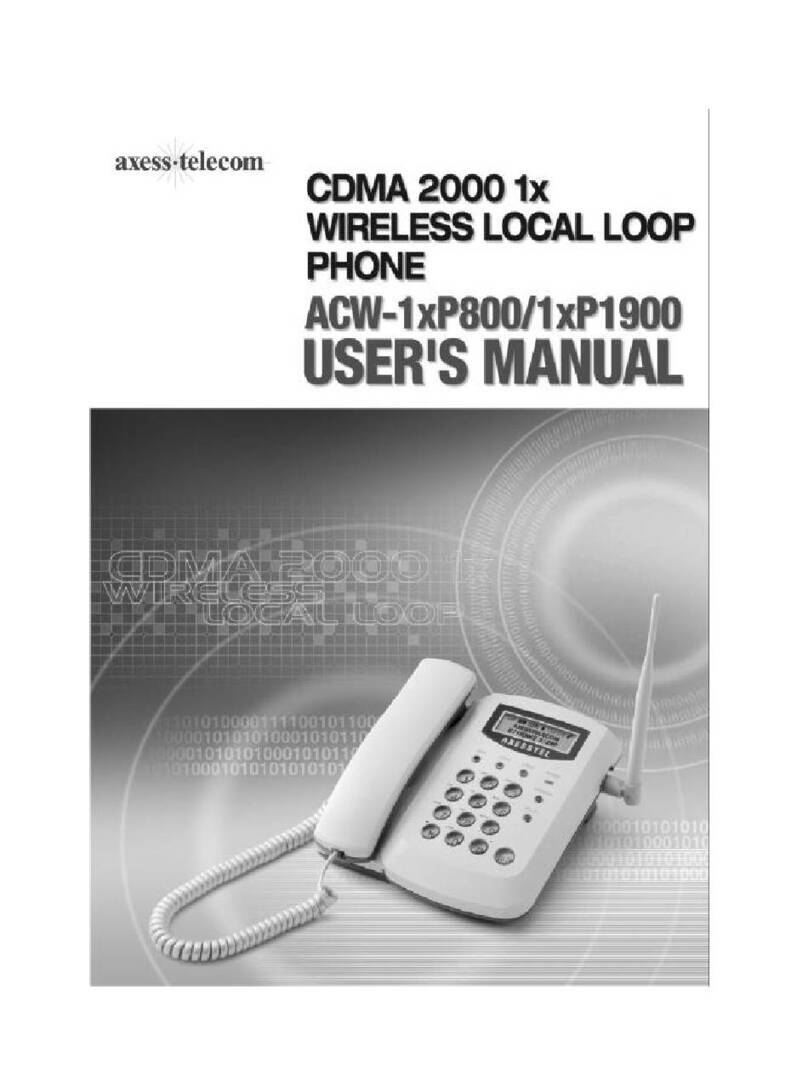Good quality batteries should provide up to six
months back-up, however following a power cut, if
display is showing ‘ ’ or power cut for more than
one day then the battery should be replaced.
Edition 5 10 March ‘99
Unscrew and open the battery cover on the
underside of the base. Clip the battery
connector cap to the terminals of a PP3 9V
battery (not supplied). Replace the cover.
2 Plug your Response 130 into
the BT socket
If you do not have a BT socket, call
Freefone 0800 800 150 and ask for a BT
engineer to come and fit the correct socket.
This is a chargeable service.
Setting up Follow these steps to get your Response 130
ready for use.
Plan where you will put your Response 130. It
should be within two metres of a power socket and
the phone socket.
Setting up
4
Warning
1Do not try to use any power supply except
the one provided, item code 871018, otherwise
you may permanently damage your Response
130 and this will result in non-compliance with
EN41003:1993, and will invalidate the approval
given to this apparatus.
2There is a slight chance that your phone
could be damaged by an electrical storm. We
recommend that you unplug the base unit from
the mains during storms.
1 Insert battery (for back-up only)
In the event of a power failure the back-up
battery prevents your Response 130 losing its
day/time setting, security code, outgoing message
and any messages or memos which have already
been recorded for up to 6 hours.
The answering machine will not operate until
power is restored.

